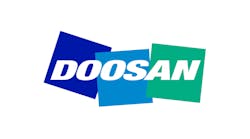Ford Motor Co. has earmarked $100 million to install robotic plant laser inspection technology in its assembly plants, hoping to achieve a more precise component fit for its vehicles in order to reduce wind noise; A “more refined fit and finish” for the vehicle is another objective.
”Wind noise” reportedly is an important quality factor for car buyers, and according to Ford reducing it is “a major industry challenge.” In addition to the new robotic plant laser inspection, Ford deploys air leakage testing, Noise/Vibration/Harshness chambers, and CMM testing to pinpoint sources of wind noise.
Robotics make it possible to assemble car door panels more accurately, with laser and camera systems that improve on the standard guidance systems used in vehicle assembly. The laser-guided methods Ford is adopting were developed in collaboration with Gonzalez Production Systems.
This new technology advances the laser-guided, end-of-line robotic technology that Ford developed in Europe to measure specific points on each vehicle as it proceeds through the assembly line, to verify build quality. The robots are programmed to measure point specifications on the vehicle, which improves on the previous method of quality control — human visual inspection.
Robots are programmed to identify deviations from correct specification; if any errors are found they instruct the operator how to correct them.
Also, the laser vision technology on Ford’s robots is being upgraded to help confirm the door quality margins once installed. The robots are able to stop an assembly line if cameras detect a door that does not fit the quality standards.
"Ford's robotic laser technology gives us a degree of precision like never before," stated chief engineer Ron Ketelhut, Ford Body Construction Engineering. "The vision technologies verify the dimensions of interfaces on the vehicle's body in a highly accurate way, to a tenth of a millimeter."
Ford inaugurated the system at its Saarlouis, Germany, assembly plant, and the automaker asserts it “significantly improve the robustness of the overall manufacturing process.” After noting the quality improvements, it started to expand installations at its plants around the world. The Michigan Assembly Plant (2012 Ford Focus) and Chicago Assembly Plant (Ford Focus) are among the plants already using the system.
Other techniques Ford uses to pinpoint the sources of wind noise include air leakage testing, Noise/Vibration/Harshness chambers, and CMM testing.
Ford has gone to great lengths to minimize noise by pinpointing its source through a number of other plant technologies – using machines to detect air leakage from cabin, NVH (noise, vibration and harshness) chambers and Coordinate Measuring Machines (CMM). The new strategy uses the entire range of tools in addition to the vision-guided robot cells and laser inspection to ensure leading vehicle quietness.
